Cats, with their graceful movements and enigmatic personalities, have captivated human hearts for centuries. But beyond their charm and playfulness, there’s a treasure trove of lesser-known facts that reveal just how fascinating these creatures are. From their extraordinary physical abilities to their unique behavioral traits, each fact peels back a layer of mystery surrounding these beloved pets.
Whether you’re a long-time cat owner or simply a cat enthusiast, prepare to be surprised and charmed by these intriguing and lesser-known tidbits about our feline friends. Let’s dive into the curious and often amusing world of cats and discover more about what makes them truly special!
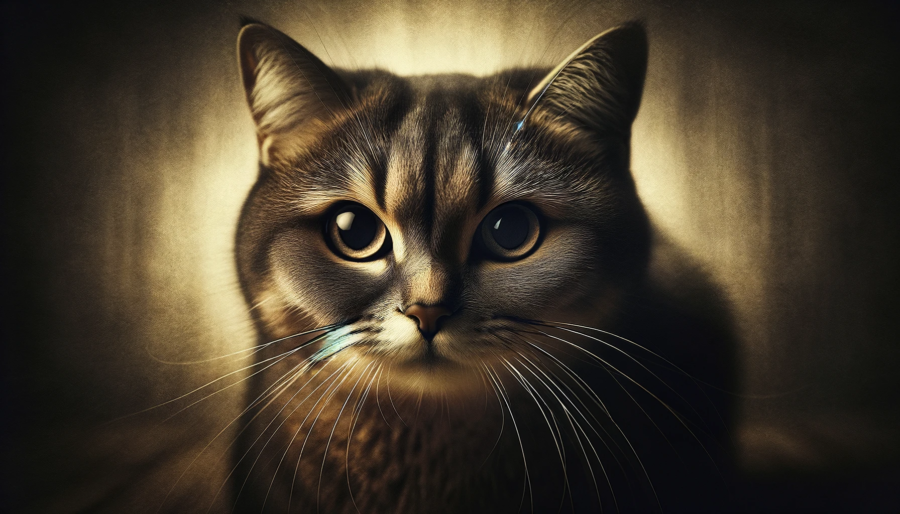
Good Luck Symbols
Throughout history and across various cultures, cats have been revered as symbols of good luck and fortune. In ancient Egypt, cats were believed to bring good fortune to their owners.
Similarly, in Japanese culture, the Maneki-neko, or the ‘beckoning cat,’ is a common talisman, believed to attract good luck and wealth. This iconic figurine of a cat with an upright paw can often be seen in businesses and homes, welcoming prosperity.
In maritime traditions, cats were often kept on ships as they were thought to bring good luck, in addition to their practical role in controlling rodents.
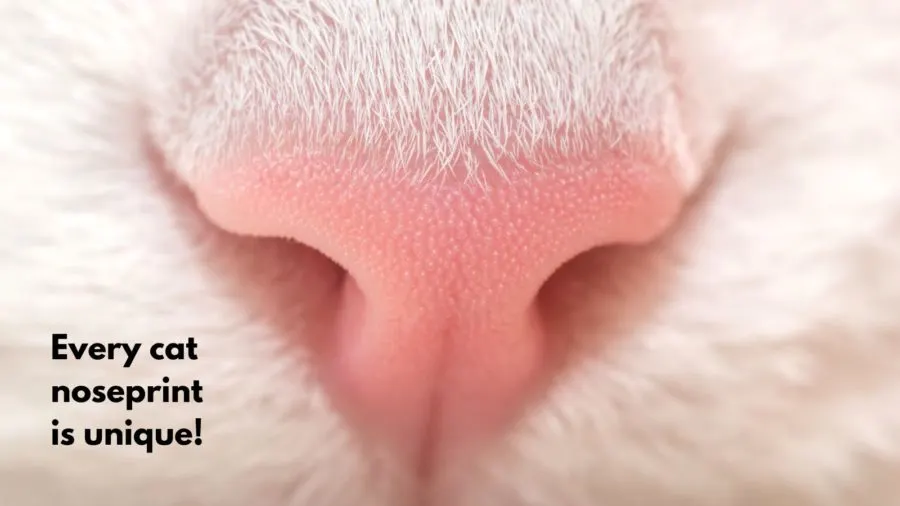
Each Cat Has a Unique Noseprint
Much like human fingerprints, the tiny bumps and ridges on a cat’s nose, known as nose prints, are distinctive to each individual cat. This uniqueness can actually serve as a reliable form of identification, akin to our use of fingerprints.
The texture and pattern are formed by the dermal papillae, which are also responsible for the tactile sensitivity of the nose. This sensitivity is crucial for their exploration of the environment, as it aids in detecting subtle changes in their surroundings.
How Many Toes Do Cats Have?
Typically, domestic cats have a total of 18 toes. They usually have five toes on each front paw and four toes on each back paw. The extra toe on the front paws is known as the dewclaw, which is higher up on the leg and does not touch the ground when they walk.
However, some cats can have more than the usual number of toes, a condition known as polydactylism. Polydactyl cats can have as many as eight toes on each paw.
These cats are often called “Hemingway cats” after the writer Ernest Hemingway, who kept some of these cats at his home in Key West, Florida, now a museum and still inhabited by many polydactyl cats descended from his original pets.
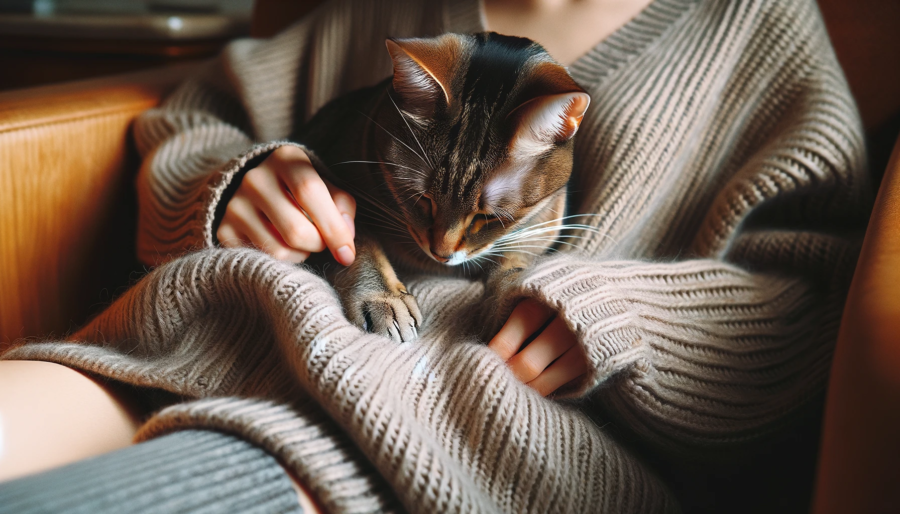
Why Cats Knead
One of the most endearing and curious behaviors exhibited by cats is what many cat lovers affectionately refer to as ‘making doughnuts’ or ‘kneading.’
When a cat kneads, it rhythmically pushes its paws in and out against a soft surface, such as a blanket, its owner’s lap, or even another pet. This behavior is often accompanied by a look of complete contentment and sometimes even a soft purring.
But why do cats knead?
This behavior is instinctual and begins at birth; kittens knead their mother’s belly to stimulate the flow of milk. In adult cats, kneading is often a display of comfort, trust, and contentment. It’s also believed that kneading marks territory, as the pads of a cat’s paws contain scent glands that release pheromones.
When your cat kneads you, it’s not only showing affection but also marking you as ‘theirs.’
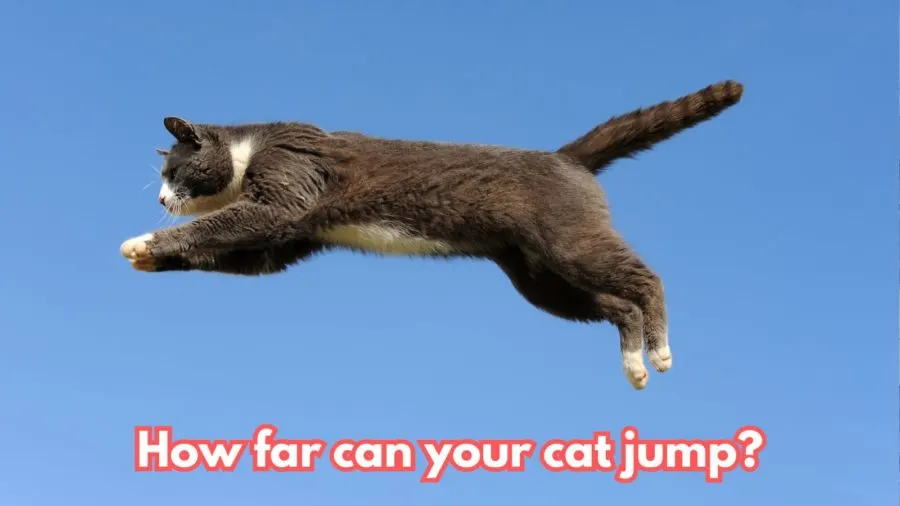
Olympic Long Jumpers
Cats are known for their remarkable agility and strength, particularly when it comes to jumping. On average, a healthy domestic cat can jump about five to six times its own body length in a single leap. This means that a typical cat, which is around 18 inches (45.72 cm) in length, can jump approximately 8 to 10 feet (2.4 to 3 meters) in a single bound.
This impressive ability is due to their powerful hind leg muscles and flexible spine, which allow them to launch themselves into the air with great force and precision. Cats also use their tails for balance, which aids them in achieving such impressive leaps. Their agility and jumping skills are not just for show; in the wild, these abilities are crucial for hunting and escaping predators.
It’s important to note that individual ability can vary based on factors like age, health, and breed. Younger cats and certain breeds might be able to jump higher, while older cats or those with health issues may not reach these heights.
If a person could jump proportionally as far as a cat, based on the average human height of 1.7 meters, they would be able to jump approximately 9.35 meters in a single leap! This is using the average multiplier of 5.5 times their body length, which is the midpoint of a cat’s jumping capability. This impressive distance highlights just how extraordinary cats’ jumping abilities are in relation to their size.
The world record for the men’s long jump is held by Mike Powell of the United States, who achieved a jump of 8.95 meters (29 feet 4 1/4 inches) on August 30, 1991–just an average cat jump if a cat were as large as a human!
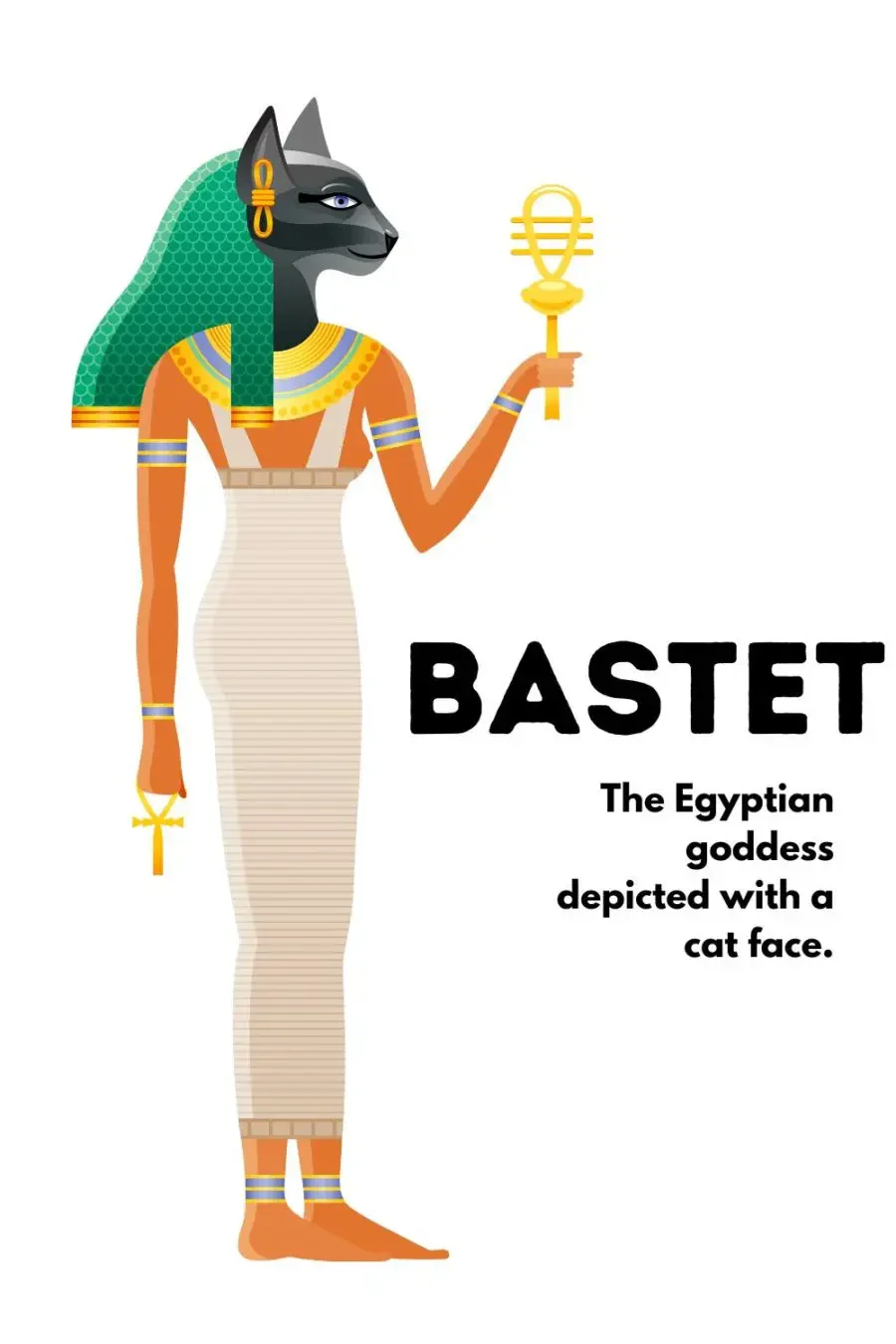
Cats in Ancient Egypt
Our cats may prefer that we treat them like gods and goddesses but in ancient Egypt, cats were really held in high esteem.
Revered for their grace and poise, cats were seen as symbols of protection and good fortune. This reverence was deeply rooted in the Egyptian religion, where cats were associated with the goddess Bastet, a deity representing home, fertility, and childbirth. Bastet was often depicted as a lioness or as a woman with the head of a lioness or domestic cat, embodying the protective and nurturing aspects of felines.
Cats were so venerated that harming one, even accidentally, was considered a serious crime, often punishable by death. This high regard extended to the afterlife, with families sometimes mummifying their beloved pets to accompany them in their journey to the afterworld. Numerous artistic depictions, from statues to paintings in tombs, highlight the cat’s esteemed position in ancient Egyptian life.
World’s Oldest Known Domestic Cat
While we all think about the ancient Egyptians when we think of some of the oldest cats, did you know that thousands of years earlier cats were domesticated in the Mediterranean?
The oldest known domestic cat in history was discovered in a 9,500-year-old grave on the Mediterranean island of Cyprus, significantly predating the widespread domestication of cats in ancient Egypt.
This remarkable find, unearthed in 2004, rewrote the history of human-feline relationships. The burial site, where the cat, likely a descendant of the African wildcat, was found laid to rest beside a human, suggested a bond of affection and significance between the two, indicating that the domestication of cats occurred much earlier than previously believed.
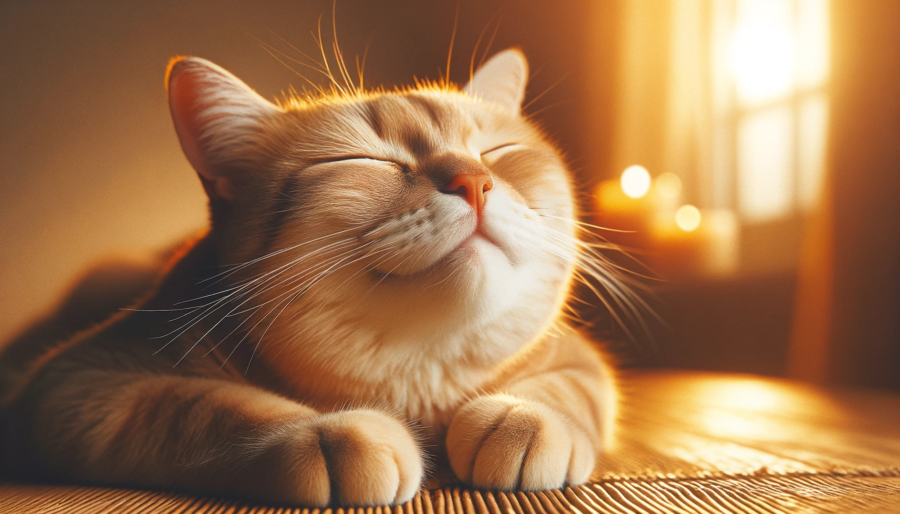
Purring Machines
The purring of a cat is a distinctive and enchanting aspect of their behavior, often associated with contentment and relaxation.
However, the mechanics and reasons behind a cat’s purr are both fascinating and complex. Purring involves the rapid movement of the muscles within a cat’s larynx, combined with a neural oscillator in the brain. This action causes vibrations throughout the cat’s body, producing the soothing sound that can range from 25 to 150 Hertz in frequency. Intriguingly, this frequency range is known for its therapeutic properties, potentially promoting healing in bones and tissues.
Cats may purr for various reasons beyond just feeling happy; they also purr when they are frightened, in pain, or even when they are close to death. In these contexts, purring could be a self-soothing behavior, providing a measure of comfort in distressing situations.
Additionally, cats often purr while nursing their kittens, strengthening the bond between mother and offspring and aiding the kittens in locating their mother. The purring of a cat, therefore, is a multifaceted behavior that serves emotional, communicative, and even healing purposes, making it one of the most intriguing and beloved aspects of feline mystique.

Cats Meow for People
While cats purr for many reasons, they meow for one reason: to communicate with us!
Meowing is a unique form of communication primarily intended for people in the world of domestic cats. Unlike their wild counterparts, domestic cats have developed meowing as a way to interact with their human companions.
Cats use meows to convey a variety of messages, from seeking attention or affection to expressing hunger, discomfort, or even playful excitement. It’s a fascinating aspect of the bond between cats and humans, as these vocalizations often serve as a bridge between the two species, enabling cats to convey their needs and desires, and allowing people to better understand and respond to their feline friends.
Cat Eyes
Cat eyesight is a marvel of nature, perfectly adapted to their hunting and survival instincts. Cats possess exceptional vision, especially in low light conditions, thanks to their large pupils that can expand widely in the dark to capture more available light. They have a superior ability to detect motion, allowing them to spot prey from a distance.
Their eyes also contain a high proportion of rod cells, specialized for detecting light and movement, contributing to their acute night vision. Additionally, their eyes have a reflective layer called the tapetum lucidum, which enhances their night vision by reflecting light back through the retina.
These facts showcase the fascinating and sometimes surprising aspects of cats, making them one of the most intriguing pets and animals in the world.
Pin it to remember

- 🎉 GIVEAWAY: Lord of the Pets Portrait of Your Cat! - November 26, 2024
- Review: Lord of the Pets Cat Portraits! - November 26, 2024
- Cat Adoption: FAQ You Might Have - June 28, 2024
